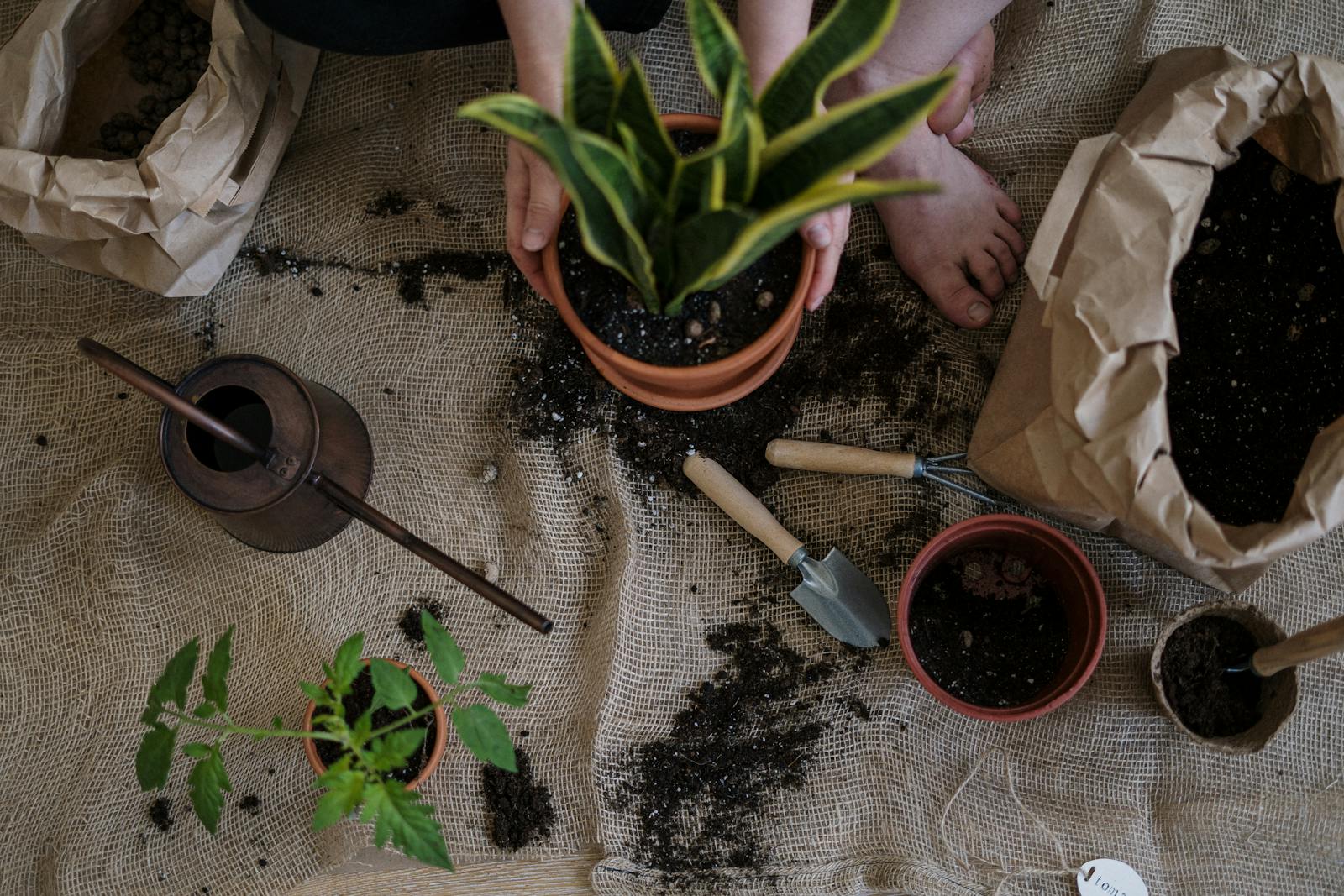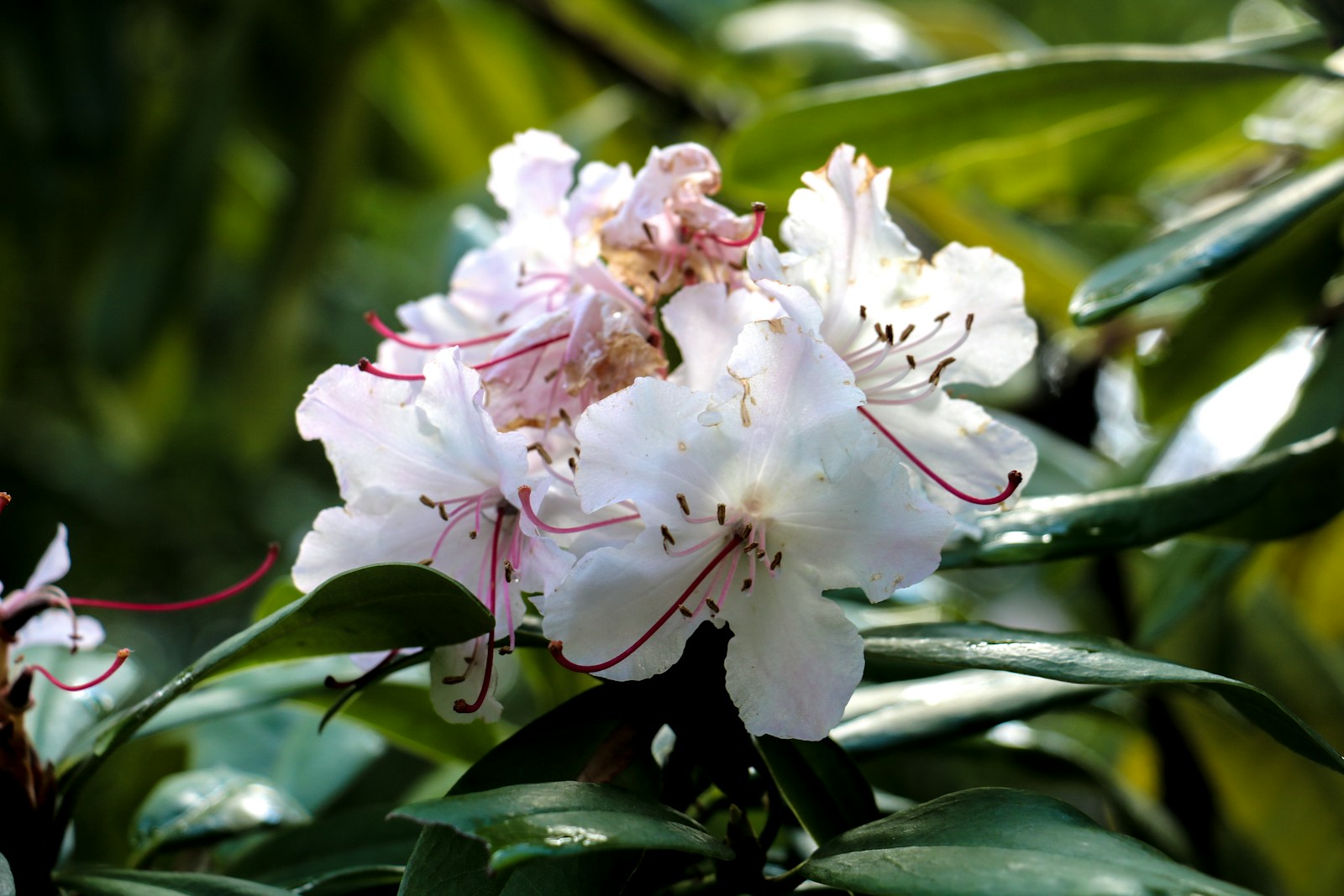Essential Tools Every Beginner Gardener Needs
Hand Trowel: Your Go-To Digging Tool
Among all beginner gardening tools, the hand trowel is one of the most essential. Perfect for digging small holes, transplanting seedlings, or loosening soil, it’s compact, easy to handle, and incredibly versatile. Look for a trowel with a comfortable, ergonomic grip and a strong, rust-resistant blade that won’t bend under pressure.
Whether you’re working in containers, raised beds, or in-ground gardens, a durable trowel helps you manage planting and upkeep with ease. It’s an indispensable tool for both precision work and daily tasks that make your gardening efforts smoother and more enjoyable.
Pruning Shears: Keeping Plants in Shape
Pruning shears, also known as secateurs, are must-have beginner gardening tools for trimming stems, shaping plants, and cutting dead growth. They help promote healthy growth by removing damaged or diseased foliage and encouraging new blooms or fruit production.
Choose bypass pruners for clean cuts on live plants, or anvil pruners for deadwood. Comfort is key, so opt for shears with cushioned handles and a safety lock for secure storage. With regular use, they’ll keep your garden looking tidy, healthy, and well-maintained throughout the growing season.
Garden Gloves: Protection and Comfort
A solid pair of garden gloves protects your hands from thorns, blisters, soil, and potential irritants. For beginners, gloves are especially helpful while handling tools or digging in new soil. Breathable fabrics keep your hands cool, while waterproof palms provide grip and durability.
Find gloves that fit snugly without restricting movement. Some gardeners prefer different gloves for different tasks—thicker ones for pruning roses and lighter ones for planting. Whatever you choose, garden gloves are beginner gardening tools that offer both comfort and safety, making outdoor work more enjoyable.
Watering Can or Hose: Hydration Essentials
Consistent watering is critical to plant health, and your watering method should match your garden’s needs. A watering can is ideal for small gardens, indoor plants, or delicate seedlings that need gentle handling. Look for one with a long spout and detachable rose head for versatile use.
For larger areas, a garden hose with adjustable spray nozzle provides flexible watering options. Add a soaker hose or drip irrigation system for more efficient water delivery. Whichever you choose, proper hydration starts with the right watering tools—making them non-negotiable for beginners.
Garden Fork: Breaking Up Soil with Ease
The garden fork is a powerful tool for loosening compacted soil, turning compost, and digging up root vegetables. Its sturdy tines penetrate dense ground where a spade might struggle. For beginners preparing new beds or mixing soil amendments, this tool proves invaluable.
Choose a fork with strong metal tines and a comfortable handle. Border forks offer better control in tight spaces, while larger digging forks cover more ground. As beginner gardening tools go, the garden fork provides heavy-duty function with minimal effort—key for building healthy soil foundations.
Garden Spade: Digging and Edging Made Simple
A garden spade is a flat-bladed tool ideal for digging, edging, and cutting through roots. Its square blade and short handle give you better control and precision than a shovel. It’s especially useful for creating clean garden bed edges or transplanting shrubs and perennials.
Look for a spade with a strong steel blade and a comfortable D-handle grip. While it may not be needed every day, a quality spade earns its place among beginner gardening tools for its versatility and durability in foundational garden work.
Rake: Clearing and Leveling Like a Pro
Rakes help you keep your garden tidy by clearing leaves, spreading mulch, and leveling soil. There are two main types: leaf rakes, which are lightweight and fan-shaped for clearing debris, and garden rakes, which are heavier with rigid tines for breaking up soil and smoothing beds.
For beginners, a basic garden rake is more versatile and can handle multiple tasks. Use it to prepare planting areas, clean up garden waste, or finish off soil surfaces before seeding. Its efficiency and ease of use make it a practical addition to your toolkit.
Hoe: Weed Control Made Easy
A hoe is one of the best beginner gardening tools for managing weeds and cultivating soil. Its sharp, flat blade slices through weed roots and loosens topsoil for better aeration and water penetration. It’s especially handy in vegetable gardens and flower beds.
There are different types of hoes, including stirrup hoes and draw hoes. For most beginners, a standard hoe with a sturdy wooden or fiberglass handle will suffice. Regular hoeing keeps weeds from taking over and promotes healthier plants by improving soil texture.
Garden Kneeler or Pad: Comfort During Long Tasks
Kneeling in the garden can take a toll on your joints. That’s why a garden kneeler or cushioned pad is a worthwhile investment. It protects your knees from hard surfaces and wet soil while reducing fatigue during extended planting or weeding sessions.
Some kneelers convert into stools and come with side handles for added support when standing up. These features make them a favorite among beginner gardening tools, especially for those working in raised beds or on their hands and knees. Comfort is key to long-term gardening enjoyment.
Tool Caddy or Tote: Stay Organized on the Go
Staying organized helps you make the most of your time in the garden. A tool caddy, bucket organizer, or tote keeps your beginner gardening tools within arm’s reach. Choose one with multiple compartments for hand tools, gloves, seed packets, and even your phone or notebook.
Look for a model made from weather-resistant fabric or plastic for durability. Staying organized not only boosts efficiency but also prevents lost or misplaced tools. With a tote, you’ll move easily from bed to bed and keep your tools ready for whatever task comes next.
Soil Tester: Know Your Garden’s Health
A soil tester gives you critical insight into your garden’s growing conditions. These tools measure pH, moisture, and nutrient levels to help you understand what your soil needs. Many models are simple to use—just insert the probe into the soil and read the results on the gauge or screen.
For beginners, a basic soil pH tester is often enough to determine whether your soil is too acidic or alkaline. More advanced versions include digital readouts or multiple test functions. Knowing your soil profile helps you choose the right amendments and ensures healthier plants from the ground up.
Spray Bottle: Handy for Delicate Watering
A spray bottle may seem small, but it’s incredibly useful among beginner gardening tools. Use it to mist delicate seedlings, apply foliar feeds, or treat leaves with natural pest solutions. It offers gentle hydration that prevents overwatering and avoids disturbing young roots or soft foliage.
Keep one filled with clean water and another with a diluted neem oil or soap solution for easy, targeted pest control. These bottles are inexpensive, easy to clean, and perfect for container gardening, seedlings, and houseplants.
Compost Bin or Pile: Turn Waste into Gold
Even beginners can benefit from composting. A small compost bin or pile transforms kitchen scraps, garden trimmings, and leaves into nutrient-rich soil conditioner. Over time, compost improves soil texture, adds organic matter, and supports plant health naturally.
Start with a countertop bin or a small outdoor tumbler. Use a mix of “greens” (like veggie scraps and grass clippings) and “browns” (like leaves and cardboard) for balance. Composting is eco-friendly and cost-saving—making it one of the smartest tools a gardener can incorporate early on.
Garden Journal: Track Your Progress
Keeping a garden journal might not seem like a tool, but it’s one of the most powerful aids for any beginner. Use it to log planting dates, weather conditions, harvest times, and successes or setbacks. These notes help you spot patterns and improve future results.
Whether you prefer a digital app or a notebook, tracking your experience lets you learn from each season. Journaling keeps you connected to your garden and builds confidence as you grow your skills. It’s a personal reference guide that evolves with your journey.
Start with the Basics and Build Over Time
You don’t need every tool on day one. Start with a few essential beginner gardening tools—like a trowel, pruners, gloves, and watering gear—and expand your kit as you gain experience. Quality matters more than quantity, so invest in tools that feel comfortable and serve multiple purposes.
As your garden grows, you’ll naturally discover what works best for your space and style. Whether it’s digging, weeding, planting, or pruning, having the right tools makes gardening more rewarding and less frustrating from the start.
Frequently Asked Questions
What are the most important beginner gardening tools?
The most important beginner gardening tools include a hand trowel, pruning shears, gloves, a garden fork, and a watering can or hose. These essentials cover planting, pruning, soil preparation, and hydration—all key tasks for starting a successful garden. As you gain experience, you can expand your toolkit to include tools like a spade, rake, and hoe. Investing in quality tools early makes your gardening tasks more efficient and enjoyable while reducing strain and preventing frustration.
How do I choose the right gardening tools for beginners?
Choose beginner gardening tools based on comfort, quality, and intended use. Look for ergonomic handles, rust-resistant metal parts, and tools that match your garden size and tasks. Start with basics like a trowel, pruners, gloves, and watering equipment. Visit a local garden center to test grips and tool sizes. Avoid overspending on complex tools you may not need right away. As your skills grow, you can add specialized tools tailored to your plants, garden beds, and personal preferences.
Do I need expensive tools to start gardening?
No, you don’t need expensive tools to begin gardening. Many beginner gardening tools are affordable and widely available. Focus on durability, ease of use, and comfort. It’s better to start with a few high-quality essentials than to buy a full set of low-quality gear. Over time, you can upgrade or add tools based on your gardening style and needs. Many budget-friendly options perform well and last for years with proper care and storage.
How should I store my gardening tools?
Proper storage keeps your beginner gardening tools in good condition and ready for use. Store hand tools in a tool caddy, shed, or garage—away from moisture to prevent rust. Hang long tools like rakes or hoes on wall hooks or tool racks. Clean tools after each use by removing dirt and drying them thoroughly. Apply oil to metal parts occasionally to prevent corrosion. Organizing and maintaining your tools extends their life and ensures they’re always easy to find.
What tools help reduce strain while gardening?
To reduce strain while gardening, choose tools with ergonomic handles, padded grips, and lightweight materials. Use a garden kneeler or seat to protect your knees and lower back during long tasks. Tools with long handles, such as hoes or spades, help you work without bending too much. Also consider raised beds or container gardening setups for better accessibility. Investing in user-friendly beginner gardening tools makes the experience more comfortable, especially if you have limited mobility or prefer gentle movements.
© 2025 GardeningandDecor.com. All rights reserved.



